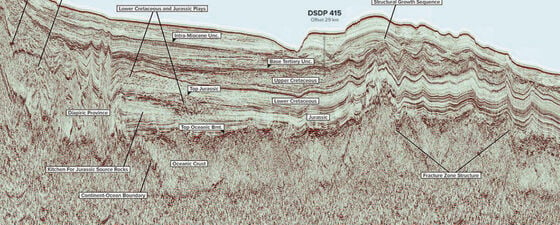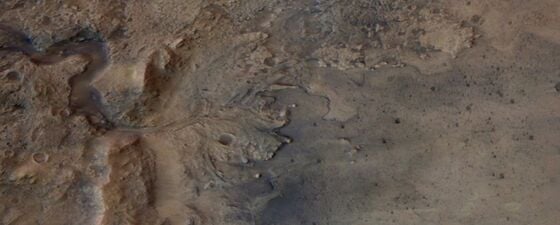The present situation in the oil and gas industry means that improving efficiency and productivity is paramount. One way forward is through innovative high-end technology companies working collaboratively, rather than competitively.The present situation in the oil and gas industry means that improving efficiency and productivity is paramount. One way forward is through innovative high-end technology companies working collaboratively, rather than competitively.
The rise of artificial intelligence (AI) and the threat that, in the not too distant future, AI may put most of us out of work, has been much in the news this year. The motivation for technology to take over tasks currently undertaken by people is to improve efficiency and productivity. This means producing an accurate or correct result at lower cost. There are many areas in which AI in its current form is unable to do this, one of these being tasks such as seismic interpretation.
The state of the art in AI is often illustrated by competitions between AI devices and humans at games such as chess; the recent flurry of media interest in AI stems from the fact that an AI device has now been created that is able to teach itself to defeat the most capable human at the traditional Chinese strategy board game, ‘Go’. Whilst this is an undoubtedly impressive milestone, games like ‘Go’ that have clearly defined rules, objective scoring systems and, in effect, binary outcomes are not representative of many work related tasks. Something like seismic interpretation, which uses analysis of incomplete or ambiguous data to understand a potentially unique situation are a much more serious challenge for AI.
Cognitive Interpretation translates geophysical data into geological images that allow the geologist to work in a much more cognitively intuitive manner, which increases the depth of understanding and insight that can be obtained from the available data. (Source: GeoTeric)
Human Visual Cognition
However, rather than breathing a sigh of relief that our jobs are safe, we need to look at how advances in technology can more effectively augment our capabilities as geoscientists. The need for improved productivity in seismic interpretation has been growing for some time but has become much more acute due to the lay-offs caused by the collapse of the oil price. This has accelerated the shift in the oil and gas workforce demographic as well as reducing the overall size of the interpretation workforce. Our challenge is to find and develop oil and gas reserves more cost effectively with a smaller number of less (on average) experienced people but who are highly trained and very computer literate.
If we are to achieve this we need to change the way that we design software and become more accepting of certain types of computational techniques. GeoTeric is leading the way in this with its Cognitive Interpretation system, which recognises that human visual cognition is the single most important factor in being able to use seismic data effectively for understanding and making decisions about the subsurface. In this, Cognitive Interpretation differs from cognitive computing approaches, such as IBM’s Watson, that rely more heavily on machine learning and prediction.
The advantage of human cognition is that it can very efficiently overlay tacit knowledge, which by definition is difficult to describe algorithmically, on to the information that can be extracted from data by the ‘mathematical’ application of explicit knowledge. The cognitive process through which tacit and explicit knowledge are combined is an essential component in generating the understanding and insights needed for all levels of decision making. The importance of software design in enabling us to work cognitively has been a missing element in most interpretation software design since the first workstations came into use.
The improved understanding of the subsurface achieved by working cognitively allows complex tasks such as fault interpretation to be carried out more efficiently and accurately. (Source: GeoTeric)
Working Collaboratively
Innovations such as Cognitive Interpretation tend to come from the smaller technology companies who focus doing specific sections of the overall workflow extremely capably. This creates a plethora of point solutions, which are very powerful individually, but have to integrate through a third party platform or end up being disconnected from the overall workflow. Unfortunately, integration through a 3rd party platform introduces its own inefficiencies. As a result, the potential productivity gains from using high end technologies are rarely realised in full. To address this issue, innovative companies can ease their path towards achieving both their technical and commercial potential if they work collaboratively with one another. An exemplar of how this can be achieved can be seen in the collaboration between GeoTeric and Eliis – who could be seen by some as natural competitors.
Combining a cognitive interpretation approach with techniques such as semi-automated model building allows a 3D geological model of the subsurface to be developed much more quickly, with greater accuracy and which incorporates a greater level of detail about the subsurface geology. (Source: GeoTeric)
What makes this collaboration interesting is that it brings the computational/data driven techniques provided by both vendors, such as the GeoTeric High Definition Frequency Decomposition and the semi-automated model building technologies provided by Eliis’ Paleoscan software, into a Cognitive Interpretation framework. The core GeoTeric/Paleoscan workflow is conceptually very simple, with the Paleoscan component sitting between two GeoTeric components, but requires both applications to have access to the same data. The result is an order of magnitude reduction in the time it takes to define a 3D geological model. Imposing the need to go through a 3rd party application or data-store would diminish substantially the productivity gain that is achievable. The speed opens the door to being able to refine and validate the model through testing different scenarios, which leads to improved accuracy and increased confidence in any decisions that are made based on the interpretation/model.
Often, the realisation of technical synergies between innovative technologies is derailed by short term competitive tensions. However, if companies can focus on providing a real workflow advantage and are prepared to share both the risks and the benefits it is usually possible for 1 + 1 to give a result that is greater than 2, both from a technical and a commercial perspective.
Encouragement Needed
Although oil and gas exploration is at a low ebb, hydrocarbons are going to play a major role in meeting our energy needs for many years to come. This means that we have to continue to get better at finding and developing the planet’s oil and gas reserves. Whether or not automated interpretation of seismic data using AI is a desirable or even an achievable goal we will not be successful unless we utilise technology to more effectively augment our human cognitive abilities to convert geophysical data into an accurate understanding of the subsurface. The technologies needed for this do exist from many small vendors, what is required is more collaboration so that the gains on offer can be realised. However, the focus of small, innovative companies is most often the need to generate the cashflow they need to survive; therefore, collaborations will only happen if they are encouraged and backed by the E & P companies, who will be the ultimate beneficiaries.
Further Reading
Cognitive Interpretation by Jonathan Henderson
Geological Expression: A New Angle on Seismic Interpretation by Jonathan Henderson
More Information
Cognitive Interpretation: seeing geology before you interpret – GeoTeric
PaleoScan Software – Eliis




